

|
|
By Teresa Bedman
SEN-EN-MUT, A HISTORICAL VIEWIn the right part of the depression that forms the rocky circus of Deir el Bahari, just before the beginning of the lower terrace of the access to the temple of the queen Hatshepsut, in the north zone, the second of the two tombs that architect Sen-en-Mut made himself build for its eternal rest is located. THE HISTORIC ENVIRONMENT OF SEN-EN-MUTOnly to mention its name inevitably evokes us the name of the queen to whom he served. Many rivers of ink have been expended about the supposed history of both personages. But, who was this man so that a queen with title of king, gave to him the absolute control of the country?. All evidences indicate that Sen-en-Mut and all his family came from On, the present Armat at about 20 Km. from Thebes. Of his family we know from the tomb located in Gurna, next to the 71 of Senenmut, that his father was called Ramose and that he only had the title of "respectable". His mother was called Hatnofer and her name was only accompanied of the title "Lady of the house". THE ASCENT OF SEN-EN-MUT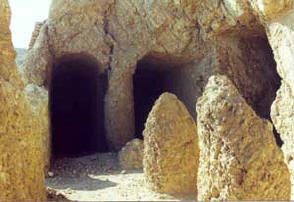 TT71. Shej Abd el-Gurna, Sen-en-Mut's first tomb Once more, the authors do not come to an agreement. Some of them think, as Dorman does, that he starts its political promotion from the army, as he believes to see a reference to this respect in the biographical inscriptions that are found in very badly state of conservation, in the first tomb of Sen-en-Mut the 71, during the last years of the reign of Amen-Hotep I. The truth is that these are too many years to think that, since Amen-Hotep I, Sen-en-Mut is getting prepared for a promotion in the political life. There are authors as Winlock, that doubt that Sen-en-Mut could do a military career in the time of Amen-Hotep I, since this was "a singularly peaceful generation". Winlock does neither believe that Sen-en-Mut acquires importance through the priesthood, as only two of his titles, and they are more than ninety, are priestly: "Prophet of the Divine Boat of Amon" and "Superintendent of the prophets of Montu en On". We could think that to be near the clergy of Amon, gain the friendship or confidence of Hapu-Seneb to occupy administrative positions, was what opened to him the doors of the power and its approach to the court, as his administrative positions of the temple of Amon are very important: "Superintendent of the Granaries, Stores, Fields, Gardens, Cattle and slaves of Amon"; "Chief of the Residence of Amon"; "Superintendent of the works of Amon"; "Superintendent of all the works of the king in the temple of Amon". We could say that administratively he was the supreme authority of Amon. 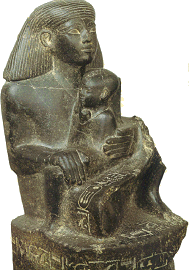 Sen-en-Mut and the princess Neferu-Ra All evidences indicate that Thutmosis II named to Sen-en-Mut: "Administrative of the goods of the queen Hatshepsut"; "Administrative of the goods of the princess Neferu Ra". Once he had reached its career in palace, he began to acquire additional responsibilities and more titles: Chief, Supervisor, Supervisor of Supervisors of all the works of the King; Superintendent of the Treasure; Superintendent of the Guns; Superintendent of the Castle of the Red Crown; Governor of the Royal Palace; Superintendent of the Private Rooms, etc... The majority of the historians of this period have considered the meteoric ascend to the power of Sen-en-Mut and the final "usurpation" of the pharaonic tiles by Hatshepsut, as somewhat inseparable. After the death of Thutmosis II, the youth reign was the unquestionable lady of the Two Lands, first as regent on behalf of his stepchild Thutmosis III, and subsequently, when he reached the majority of age, she decided to continue like co-regent with the same rights. Several authors, as the matter is very suggestive, have believed to see a personal relation between the plebeian and the queen. Something more than a simple fancy. In fact, he is often qualified as her lover, although this hypothesis is rather an illusion. Said personal relation between Sen-en-Mut and Hatshepsut, is based only on so insubstantial evidences such as a painting located in Deir el Bahari, more exactly in an unfinished tomb excavated in the rock belonging to the Medium Empire and situated in the cliff that is located over the temple of the queen. 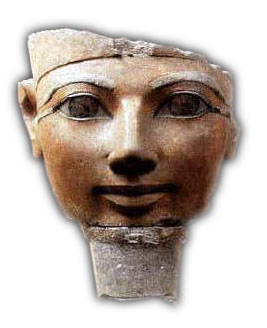 Hatshepsut, fragment of statue The workers that built the temple used it like place of rest and they amused themselves scribbling drawings and hieratic texts in the walls. Among these drawings, it stands out the sketch of a type of Superintendent that, in spite of not having any inscription, has been identified with Senenmut, the "Superintendent of every constructive activity of Djeser Djeseru". Next to him it is found a female image that carries the real crown in the head and with whom it has been wanted to identify the queen Hatshepsut. Firmly we do not have a concrete date, but more frequently it is pointed out that the positioning of Sen-en-Mut, runs in parallel with the taking of power of the queen. It is mentioned with a great frequency the date of year 7, but we know by means of several monuments that in this date Sen-en-Mut already exercised with full powers, namely: is the date of the start of its tomb 71 of Gurna and very possibly, also of the second. For this same date we have the beginning of the construction of the Djeser Djeseru. These data, are in themselves sufficiently eloquent to be able to affirm, without falling in the error, that the career of our personage is previous to the year 7 of the queen. We have spoken of Sen-en-Mut as tutor of princess Neferu Ra, of Sen-en-Mut as possible soldier, as supervisor ,etc..., but we have not yet mentioned the title by which he has passed to the history, that of architect. SEN EN MUT AS BUILDER OF THE QUEENHe, as Great Administrator of Amon, will be the unique head of all the constructive program, that will be carried out during the reign of Hatshepsut, although is very possible that he shared his title during some time with Hapu Seneb, as the statue of Bologna seems to indicate it, but he never was the architect of the queen as erroneously he has been called. In the year 7 it begins the construction of the most symbolic work of all the reign and possibly the most majestic one of all the Egyptian period the Djeser Djeseru "the wonder of the wonders", the Temple of Deir el Bahari. In the zone it was located the funerary temple of Mentu Hotep II, the first theban king of Egypt, that supposed, not only a challenge, but an inspiration for Sen-en-Mut. The old scheme was preserved: temple of the valley, ascending road, funerary temple and sanctuary, excavated in the same mountain. But it was born of a totally different architectural form. Here all turns out to be more free, more delicate, more open than in any another Egyptian architectural assembly, of before and of later. 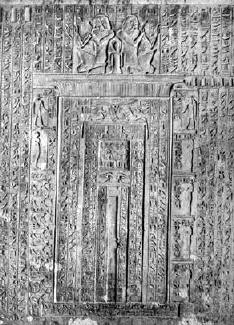 False Door Stele, Chamber A ITS TOMB: THE TT 353 OF DEIR THE BAHARISen-en-mut ordered the excavation of this tomb at about the 7th year of the reign of its queen, at the same time that the works of excavation of the temple began. It was excavated deeply in the rock in such a way that all Sen-en-Mut's funerary ensemble remained integrated inside the sovereign's complex, i.e., in the subsoil of the first terrace. The long and steep descendant gallery of fifty-three meters, ends in a very small chamber brilliantly decorated with the Book of the Dead, a False Door Stele and crowned with an outstanding unique and splendid astronomical ceiling, magnificently preserved at present. Said astronomical ceiling is the oldest one known in the history of the Ancient Egypt. The twelve months of the lunar calendar are reproduced in it, as well as the stars and the constellations of the Northern Hemisphere. Another descending gallery takes us to a second chamber without decoration and since this, to the third with a well, also without decoration. 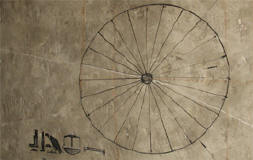 Fragment from the astronomical ceiling A deep study of the astronomical ceiling allowed the setting of the position of Jupiter and Mars in that time, and through impressive and complex astronomical and mathematical calculations, the ending of the works of the ceiling could be dated in the year 1465 b.C., i.e., the 17th year of the reign of Hatshepsut. The date and the circumstances of Sen-en-Mut's death are still a mystery. It is said that he felt in misfortune or that he was killed, what it is verified is that after his disappearance, the queen transferred her powers to her nephew Thutmosis III and that the death or disappearance of the queen occurred little time later. BIBLIOGRAPHY
|